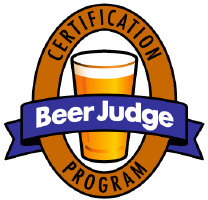Want to brew your own beer? Start Here!
Thanks, President Carter!

Homebrewing history
In 1933, Congress passed the 21st Amendment, which repealed the 18th Amendment and ended Prohibition. Unfortunately, due to a clerical error, the words "and/or beer" were not included in the 21st Amendment, and home production of beer continued to be illegal. Thanks to President Jimmy Carter, homebrewing was legalized in February 1979, to the joy of beer drinkers everywhere! The law now states that any person over 21 years of age may legally brew up to 100 gallons of beer per year, as long as the beer is for personal use only. Since that law was passed, the hobby of brewing beer at home has become ever more popular. Today, there are many different homebrewing clubs and guilds, as well as local, national, and international homebrewing competitions. Homebrew supply shops are easy to find, and most people don't have to look too far to find the information they need to start brewing or to find someone with whom to brew. In fact, it seems like the more I brew, the more friends I have who want to learn!

How many styles of beer are there?
One of the first things I learned is that there are more than just two types of beer (light and dark). In fact, according to the Beer Judge Certification Program (BJCP), an organization dedicated to the education of aspiring beer enthusiasts everywhere, there are over 80 styles of beer in 23 different categories.
What is beer made of?
Regardless of style, almost every beer is made from four basic ingredients: Water, grain (usually barley), hops, and yeast. In 1516, Germany passed a purity law, called Reinheitsgebot,which states that beer may ONLY be brewed from these four ingredients.
Like every beverage, beer is mostly water. Therefore, water quality has a great effect on the taste of a finished beer. In fact, in order to clone many famous beers, local and imported, you need to add minerals to your brew to imitate the flavor of the water used where the beer is originally brewed.
Malt (malted barley) is the most common grain used in brewing beer, however wheat, oats, corn and rice are also common, and brewers have been known to use exotic grains like teff or quinoa. In order to malt barley, it is soaked in water to germinate and then germination is stopped by drying the grains with hot air. There are many types of malt, and each gives different color, flavor, and body characteristics to the beer.
The word hops, when used in reference to brewing beer, refers to the cone-like flower of the Hop vine, or Humulus Lupulus. Hops are used to impart bitterness, flavor, and aroma to the beer, depending on how long they are boiled during the brewing process. Some old styles of beer do not utilize hops during the brewing process. There are over 60 varieties of hops, and some will flourish when grown at home!
Yeast is the most important ingredient in the brewing process. It is a living organism, and it is responsible for making the alcohol and carbonation in the finished beer. When introduced to unfermented beer, yeast reproduces at a rapid rate and eats sugars, producing alcohol and carbon dioxide as waste products. The flavor of the beer can be changed by using different strains of yeast and by changing the temperature at which the beer is fermented.
How is beer made?
The brewing process is really very simple. To begin, you crack the grains in a mill. Place the grains into a specific amount of water and heat to an exact temperature for a certain amount of time, all of which depend on what recipe you are following. Once you have extracted all of the fermentable sugars from the cracked grains, you remove the grains, rinse them into the pot, and you have what is referred to as a mash. After the mash is complete, bring it to a boil and add the hops according to the recipe. When the boil is complete, pour the boiled mash and hops through a strainer into a sanitized fermenter and pour clean water over the strainer to rinse, or sparge. Add clean water to the fermenter to create the amount specified in the recipe. This mixture is called wort - pronounced "wert". Once the wort is cool enough to add the yeast without killing it, the yeast is added, or pitched, and the fermenter is sealed with an air-lock, which allows carbon dioxide to escape, but does not allow anything else in. After the beer has completely fermented, it can be bottled. Fermentation is checked by measuring the specific gravity of the wort with a hydrometer. Specific gravity is the ratio of the density of a liquid to the density of water at a specific temperature. Usually a recipe will have the finished gravity listed, so you will know when it is ready to bottle. At bottling time, a small amount of corn sugar is added to the beer to reactivate the yeast so that it will produce carbonation while in the bottle. After 7 to 14 days in the bottle, the beer is ready to drink, however, the flavor of many beers improves with time. In fact, I have a pomegranate ale that was almost undrinkable when I bottled it, and gets better every time I dare to crack one open!
What do I need to get started?
A basic brewing kit can be purchased from a local homebrew supply store, but I chose the super-deluxe kit, which includes:
5-gallon stainless-steel stockpot
stainless steel mesh strainer (for hops)
boil-proof nylon spoon
Charlie Papazian's 400-page Joy of Homebrewing (an AWESOME book!)
8-gallon primary fermenting bucket
5-gallon glass carboy (for secondary aging and clarification)
heavy-duty bottle capper (lifetime guarantee never to break)
glass "triple scale" hydrometer
floating glass thermometer
stick-on "Fermometer" thermometer (for the outside of the primary bucket)
auto-siphoning racking cane (starts siphons with a quick pump, easy to clean)
six feet of siphon tubing
spring-loaded bottle filler (for easy filling of beer bottles)
hose clamp for shutting off the siphon
airlock
2 rubber stoppers
4 ounces of Iodophor iodine sterilizer
1 pound of corn sugar
approx. 100 bottle caps
Your local brewing supply shop can also give you LOTS of information on how to brew, recipes, tips, tricks, and they can also help you find brewing resources, such as homebrew clubs and competitions.
To me, one of the best things about brewing my own beer is the ability to make whatever I want. I can try all kinds of new flavor combinations that I would never find in a store, and if I'm lucky, maybe someday you'll see one of my concoctions at your local supermarket!
Cheers!









